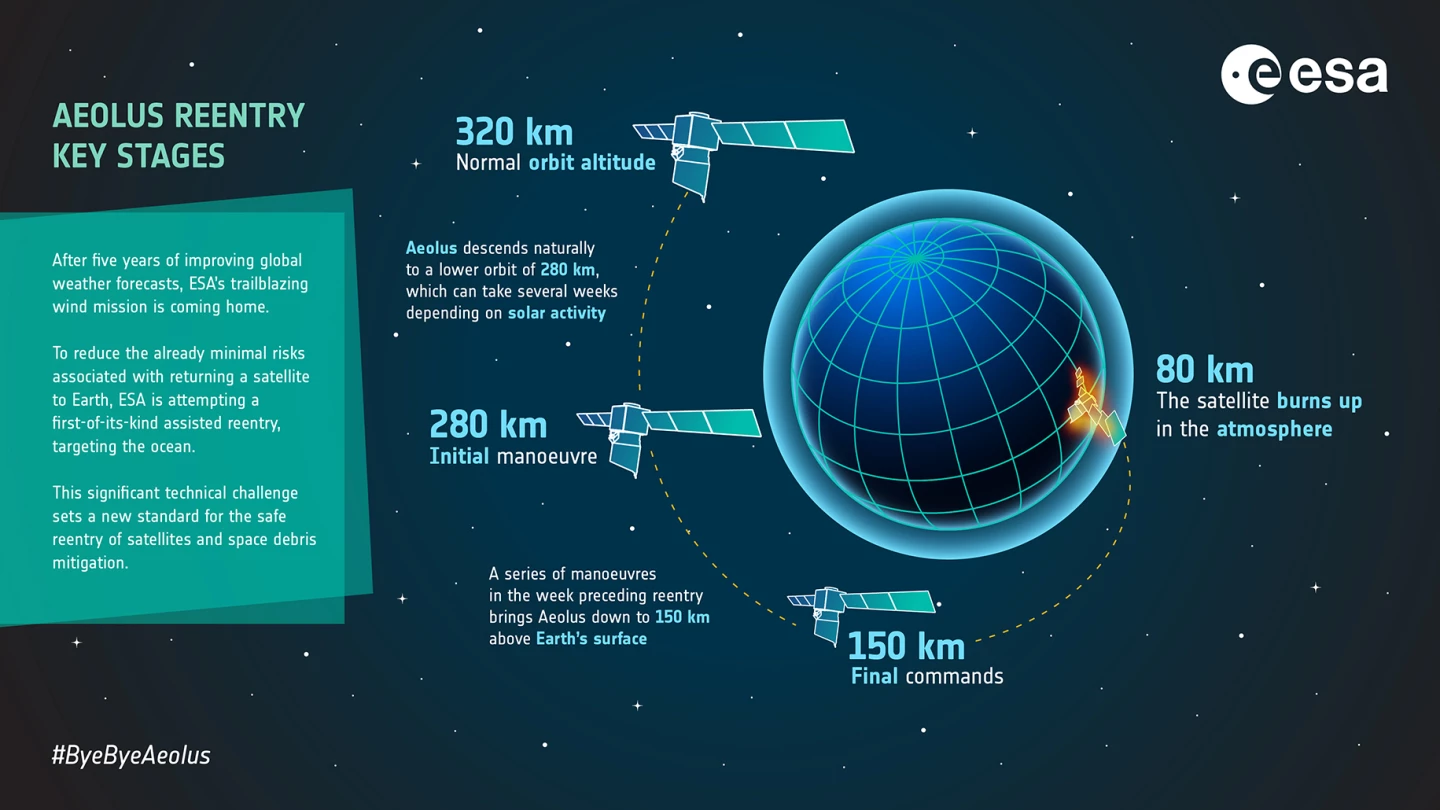In an historic experiment, ESA has made a controlled reentry of its Atmospheric Dynamics Mission-Aeolus (ADM-Aeolus) satellite in a maneuver designed to reduce the risk of such end-of-life events creating space debris or fragments reaching the ground.
Launched on August 22, 2018, Aeolus was an ESA Earth observation satellite that was the first to be equipped with instruments for making precise measurements to create global wind-component-profile observations. It was also the first satellite capable of measuring winds from the Earth's surface up to the stratosphere at an altitude of 30,000 m (100,000 ft).
Exceeding its three-year service life by 18 months, the thruster fuel used to adjust the satellite's orbit was running low and recent increased solar activity caused the Earth's atmosphere to expand, causing even more fuel being consumed.
As a result, Mission Control decided to terminate the mission. This is hardly unusual, but what made this decision stand out was that ESA wanted to use the opportunity to test how to make a closely controlled maneuver intended to make reentry of defunct spacecraft much safer than even current standards require.

In the first of four phases, Aeolus's orbit was allowed to decay to an altitude of 280 km (175 miles). The thrusters were then used to reduce the altitude to 250 km (155 miles), during which ESA engineers evaluated how well the spacecraft could handle large low-altitude maneuvers.
During the second phase Aeolus went through four maneuvers over five days to bring it down to an altitude of 150 km (93 miles). The third phase lowered it to 120 km (75 miles). After this, it moved into Phase IV, during which the thrusters fuel and battery fluids were jettisoned to minimize the risk of a debris-scattering explosion.
According to ESA, once Phase IV was completed, Aeolus was turned off, so there was no radio transponder for the space agency to track. However, the TIRA radar showed that Aeolus remained on its predicted trajectory. US Space Command later confirmed that the satellite burned up at about 9:00 pm CEST on July 28, 2023 over Antarctica.
The video below shows the stages of Aeolus's reentry.
Source: ESA






